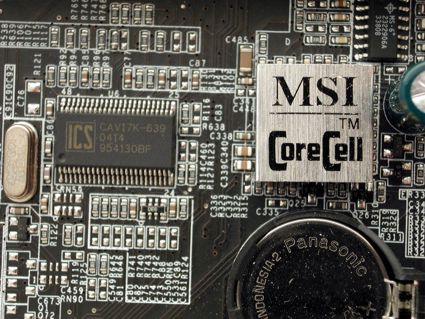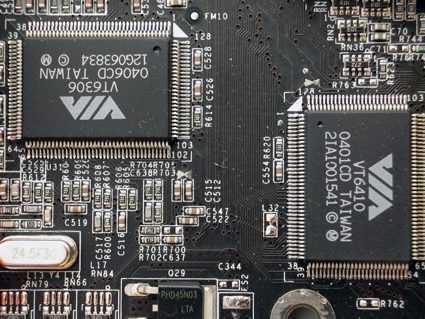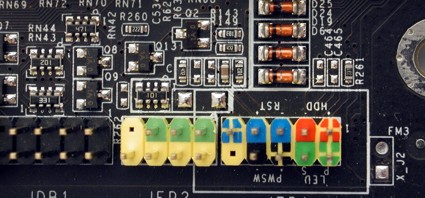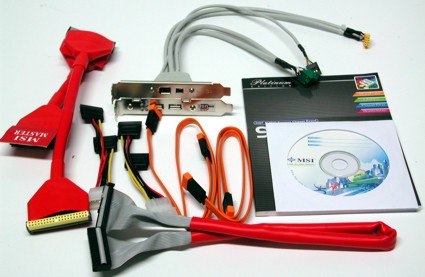Mobo Makers Try Again with Intel's 925X and 915P Chipsets
MSI 915P Neo2
BIOS: 0.0B3 (07/01/2004)
The 915P Neo2 is very similar to the 925X Neo in terms of structure, but the details are different. In contrast to the 925X Neo, the 915P Neo2 also uses two network controllers, i.e. one for the Gigabit and one for the 100 Mbit Ethernet. Both boards use MSI's CoreCell Chip, which is responsible for both the monitoring of voltage and clock speed and for dynamic overclocking, and, if necessary, underclocking. Dynamic overclocking (max. 15%) is selected in the form of military ranks.
MSI has installed heavy duty heat sinks on the voltage regulators. Of course, this does not change the fact that there are only three phases. A positive feature is that the Northbridge is now no longer cooled by a rickety little fan on this board. In most cases, this is only necessary in the case of extreme overclocking - and MSI's performance in this discipline is not very convincing. The maximum limit was approximately 220 MHz.
On the other hand, the standard clock speed is unfortunately well below the norm: 203 MHz FSB speed is the minimum, it is not possible to set it to a lower speed. MSI passed our shutdown test without any difficulties; the board only crashed at CPU temperature of approximately 102°C. With the 915P Neo2 we experienced the familiar problem that benchmarks produced less results with each run. This was solved with the second update - MSI was however supposedly unable to name the problem.
Thanks to a VIA VT6303, the MSI boards each offer two Firewire ports, which are led outside via an adapter module. The items supplied with the device include IDE cables "optimized" by shrink piping, SATA cables and a proper handbook.
The 5751 from Broadcom is already connected via PCI Express.
The VT6303 is a FireWire chip and the 6410 an IDE RAID controller.
Get Tom's Hardware's best news and in-depth reviews, straight to your inbox.

Patrick Schmid was the editor-in-chief for Tom's Hardware from 2005 to 2006. He wrote numerous articles on a wide range of hardware topics, including storage, CPUs, and system builds.






